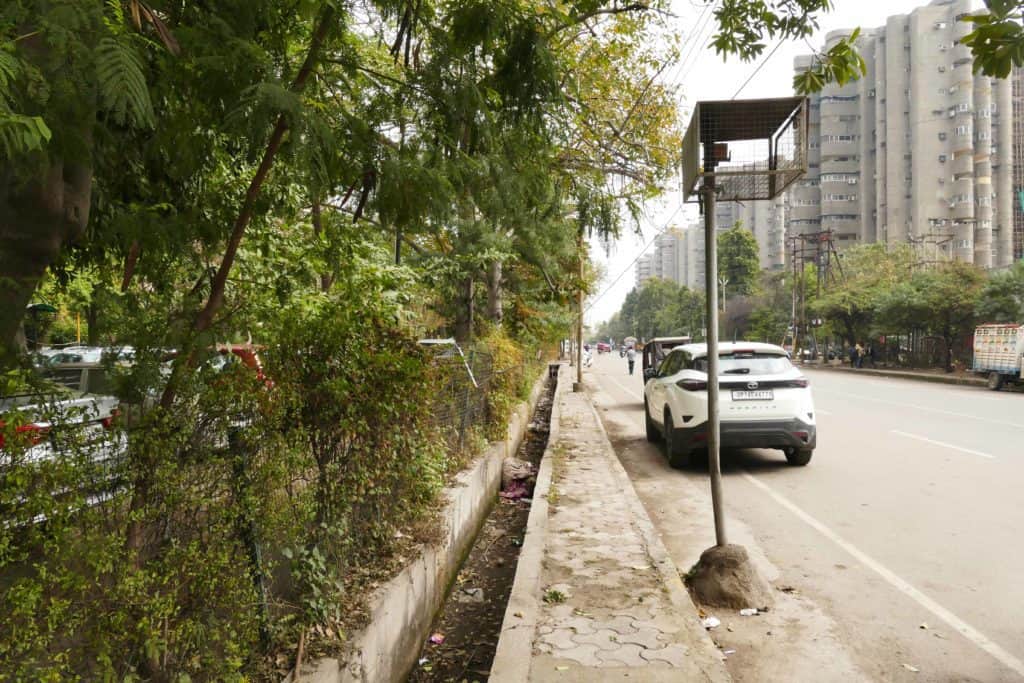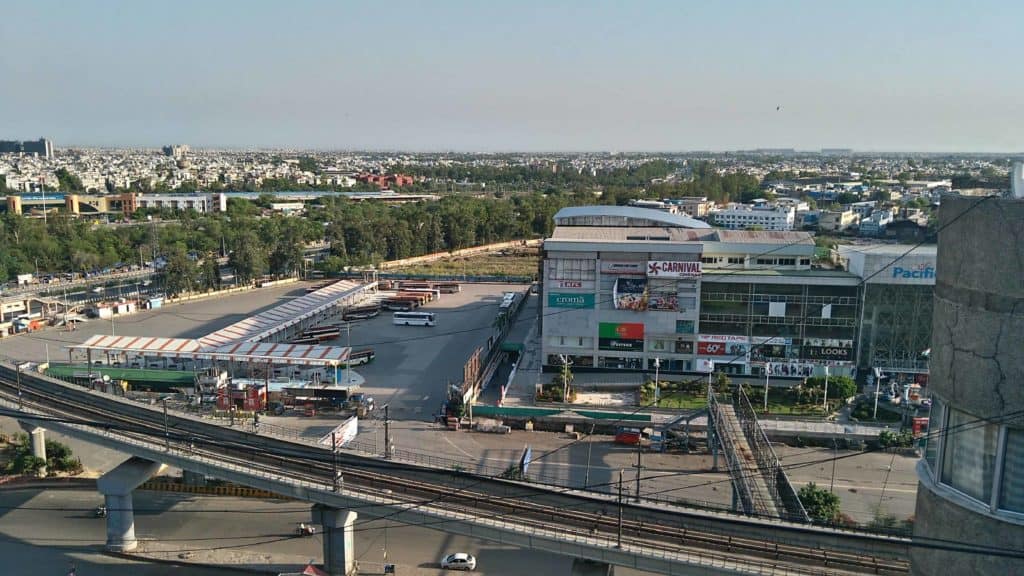Residents of the NCR town of Ghaziabad, which is part of poll-bound Uttar Pradesh, have learnt one important lesson in recent years. That public health is an issue that residents have to solve for themselves through their RWAs, or other people’s associations.
There was a distant hope, in vain as it turned out, that the new budget would at least mention public health, especially in the poll bound states. Not surprisingly, even though polling in this assembly segment is on February 10th, no poll manifesto as yet has promised anything that will improve the environment for better health.
Administered by the Ghaziabad Nagar Nigam (GNN), the township generally bags the top slot among the country’s most polluted cities. Yet, no aspiring candidate has even mentioned the issue. Even though health has been the top of the mind concern of people in this urban sprawl, given its messy sewerage system, poor waste management, air pollution and, of course, COVID.
Read more: Delhi: Super commission fiddles while air pollution turns deadly
Sunil Kumar Sharma, sitting BJP MLA, Sahibabad, who will contesting on the BJP ticket again, has not mentioned the word health or asked for funds for public health or taken up these issues with the GNN. Sahibabad is in Ghaziabad district and is part of the Ghaziabad Lok Sabha constituency, represented by Gen V K Singh, Minister of State for Road Transport and Highways.
But Sharma had in December set up an open air gym at a cost of Rs 12 lakh in the Central Park at Kaushambi, where this writer lives. If he had not done it in mid-December, the MLA LADS fund available to him would have lapsed. It was a project slated for 2020-21, and is one of 50 that the GNN wants in the parks of the district.
The usual excuse, no money
The excuse given is the usual one, lack of money. That even as Ghaziabad city grew 20 times, the funds of GNN grew just two times, according to an official source.
As a result, to give just one example, fogging to deal with mosquitoes and malaria should be done every fourth day, given the breeding cycle is generally 7-8 days. But they are able to do it only once in three weeks, says the municipality. Some RWAs believe that even this is not happening.
A spray to deal with the larva sites at the storm water drains is meant to be done once a month. But short of funds, the GNN is unable to do that either. Not surprisingly, in 2021, Ghaziabad city had the highest recorded number of dengue cases.
However, in my area of Kaushambi, a residential area of high rise and low rise buildings bang on the Delhi-UP border, the number of dengue cases were negligible. The reason: the Kaushambi Residents’ Welfare Association (KARWA) decided to take charge.
Read more: A wish list for public healthcare in 2022
KARWA president V K Mittal spoke to the GNN Municipal Health Officer for help with trained manpower to do the fogging. KARWA bought the anti-larve chemical Solfac at government-determined rates from companies with the help of the Chief Engineer of the municipal corporation.
A retired senior government officer, Mittal also contacted the District Malaria Officer in charge of urban and semi-urban areas, requesting machinery that the government has but the RWA cannot afford to buy. GNN provides the staff to execute the spraying, fogging and disinfecting of public spaces.
“The end result is we succeeded in keeping malaria and dengue at bay,” says Mittal. KARWA takes care of the fogging within the boundaries of the member towers (15 of the 22 towers are members), and RWAs of individual towers are given the chemicals to spray within the building semi-open spaces, corridors and public spaces.
This exercise has to be done for eight months a year. KARWA spent Rs 90,000 for two cycles of spraying in 2021, March to June and September to December. “We don’t have the funds to fog the public roads every fifth day,” said a resident of one of the towers. The anti-malarial is given in powder form, for dilution and spraying in basements.
Interestingly, two towers, each with 84 apartments and eight offices, wanted to become members of KARWA when dengue was raging in the city. And some residents of independent low rise homes in the area also wanted to chip in, but could not be covered.
Partnering with municipal bodies apart, the public health issues of a community are intricately linked to the functioning — rather non-functioning — of government bodies. And more importantly, the courts that people knock at for solutions in the face of indifferent government agencies.

Storm water drains to ‘ganda nallas’
Kaushambi would appear to have a filthy open sewerage system in the midst of high rise buildings and wide roads, making Ghaziabad dengue-prone. But apparently these are deep RCC storm water drains. The Supreme Court had ordered that the drains be left uncovered and cleaned up every 15 days.
But due to the heavy release of sewage into the storm water drains by a couple of towers with problematic sewer connections and some rows of low rise houses, and a village nearby, the storm water drain can easily be mistaken for open “ganda nalas”.
The GNN believes it is a “problem created by the Ghaziabad Development Authority”. An officer explained that GDA is a builder and hands over buildings to the GNN when they reach 25% occuppancy. However, in this part of Ghaziabad, the GNN found many glaring deficiencies, and slapped a penalty of Rs 4.5 crores on the GDA in 2004. According to sources, “GNN put the money in FDs, and did nothing to rectify the shortcomings”.
It was only when city residents took the matter to the Allahabad High Court that the GDA was ordered, in 2015, to pay up another Rs 2 crore. But then the Supreme Court transferred the jurisdiction of this issue to the National Green Tribunal (NGT) which slapped a penalty of Rs 5 lakh each on a clutch of government agencies that should have completed this work. The NGT also issued about 18 specific orders.
Read more: “A digitised card cannot solve problems of access and affordability in public health”
A big public health issue in Ghaziabad has been air-pollution, resulting in high incidence of lung and respiratory infections. The city has industry, residential areas, bustling markets, railway tracks crossing through and never ending new constructions. It is skirted by national highways with a very high volume of rattling old buses. The city’s bus terminus to connect to the Anand Vihar ISBT of Delhi was a patch of uneven land with dust and diesel fumes flying thick and fast all over.
The NGT’s order and imposition of penalty resulted in that plot, next to a mall that once was the biggest in the NCR, getting lined with RCC tiles, reducing the dust, even if only a wee bit. It also resulted in roads being improved to reduce dust.
The NGT, in another hearing, then appointed IIT Roorkee as a consultant, maintaining that 14 out of the 18 orders had not been implemented. The consultant had a committee to inspect and report to the NGT. The report said all the issues the NGT addressed remained as it had been. That was when KARWA in 2019 filed an execution application. But the pandemic stalled the proceedings.
Hell for 45 minutes
In 2020, Justice Sanjiv Khanna, a Supreme Court judge described his angst at having to cross the Ghaziabad-Anand Vihar stretch every day, as “hell for 45 minutes”. The apex court wanted a traffic management plan for the Kaushambi area that falls bang on this stretch, and wanted the NGT to keep an eye on it.
When hearings resumed in September 2021, the NGT directed that the Divisional Commissioner of Meerut — 19 district magistrates report to him — to be personally present in the court. The NGT even warned the officers of adverse entry in their Annual Confidential reports if the NGT orders were not implemented.
NGT chairman Arun Kumar directed that all the dumpyards in the area be closed and cleaned. The order also focussed on the implementation of some other public health issues: segregation of waste into wet and dry at the residence or RWA level, composting wet waste at the residence or RWA level directly or through an agency. GNN was directed to collect the dry waste.

Waste has no place to go
Mounds of garbage and solid waste present an ugly and unhealthy sight in the city that fell in the Swachh Sarvekshan rankings from 13th in 2019 to 19th the next year. With a daily solid waste of 1200 metric tonnes as against a capacity to deal with only a third of it, the GNN in October last sent out over 900 notices to what it called “bulk generators”. This included high rise residential buildings, hotels, banquet halls, industrial establishments. The KARWA too received such a notice.
Ghaziabad has no landfill site. Mahendra Singh Tanwar, Municipal Commission of Ghaziabad maintains that if the bulk waste generators start processing waste, there will be substantial reduction in the quantity of waste the corporation has to processes daily.
“The bulk waste generators have to simply segregate dry and wet waste and convert the wet waste to manure,” he told societies. He warned them that he will report the matter to the NGT.
Penalties on individual apartments, houses or RWAs failing to segragate and compost were fixed at Rs 10,000 for the first time, Rs 20,000 for the second failure, and Rs 40,000 for the third.
Overflowing stinking sewage water with plastic floating on it has been a public health issue that RWAs regularly raise with the GNN. At one such meeting that a few RWAs had last year with Tanwar, he pointed out that only 20% of the clean water is used by residents, the remaining 80% goes into the drains directly. With an urban population of 25 lakhs, and a norm of 135-140 Litres per Capita per Day (LPCD), the GNN has to treat 200 MLD sewage.
Though the local body has the capacity to treat and use the treated water in its gardens, green belts, parks and fire brigade, there is still way too much treated water going waste.
Read more: Mumbai NGOs release manifesto to transform public health – will parties listen?
The GNN will now supply that to industrial units as well as to the construction sector through a network of pipes, so that they don’t tap underground water. Also on the cards is a world class water treatment plan that can make the sewage water fit to drink.
The GNN last year floated Green Bonds to raise money to build the network of pipes and set up a new treatment plant. The bonds, worth Rs 150 crore, were allotted in April last and are listed in the Bombay Stock Exchange.
The UP government has also been directed to replace the 800 highly polluting old diesel buses that come to the bus terminus spewing toxic black fumes. As of now, 158 of them have been replaced with CNG buses. GNN officials say they plan to replace the rest with electric buses.
All that, however, is for the future. For now, it is back to the people coping with all the problems as best as they can on their own as the political parties and candidates do the campaign rounds.
“But politicians don’t come to Kaushambi, where most residents are educated but only 14-15 % of voters actually go to vote,” says Mittal. “So, there is no question of the politicians making any promises or listening to us. We have invited them many times, they have never come”.
“But the officers are always ready to come and see and hear our problems, particularly on public health issues in these pandemic times,” says Mittal.
Small consolation that.